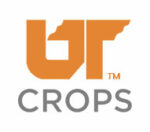LINKS
Early Season Pigweed Identification
Larry Steckel, Professor
Weed Specialist
Print-Ready PDF Publication (Early Season Pigweed Identification W069)
The pigweed species are some of the most widespread and competitive summer annual weeds infesting row crops in Tennessee. These weeds can reduce yields and make harvest difficult. One management control option for pigweed is the use of herbicides. Research has shown that different pigweed species respond differently to certain herbicides. Therefore, proper early identification at growth stages when the pigweed can still be controlled is very important. There are eight species of pigweed common to Tennessee, making it very difficult to distinguish between species in the seedling growth stages. The following are some guidelines to help with pigweed identification. It should be noted, however, that there is often physical variation within species and that some species of pigweed can cross with other species resulting in hybrid plants. Pigweeds will not always express the specific traits of one parent species or the other, but may express a combination of both.
Smooth pigweed (Amaranthus hybridus) (Figure 1)
- Plants will have very small fine hairs throughout.
- First leaves are rounded with small notch at leaf tips (Figure 2).
- Leaf and stem surfaces are rough.
- Easily distinguished from redroot pigweed only in mature stages.
Redroot pigweed (Amaranthus retroflexus)
- Very fine hairs are often found throughout the plant, though stems below the cotyledons can be smooth.
- Stems below cotyledons are often red in color.
- Leaf and stem surfaces are rough.
Prostrate pigweed (Amaranthus blitoides)
- Plants are low-lying and mat-like on the ground.
- Leaves are spatulate (shaped like a spatula, being broader above than below).
- Small leaves, usually less than 1 ½ inches long.
Tumble pigweed (Amaranthus albus)
- Egg-shaped leaves with wavy edges.
- Leaves are small, usually less than 1 ½ inch long, with short petioles.
- Often olive green color.
Gleason, H. A. and A. Cronquist. 1963. Manual of plants. 280-282.
Horak, M. J., D. E. Peterson, D. J. Chessman, and L. M. Wax. 1994. Pigweed identification: A pictorial guide to the common pigweeds of the Great Plains. Publication S80. Manhattan, KS: Kansas Cooperative Extension Service.
Sauer, J. 1956. Recent migration and evolution of the dioecious amaranths. Evolution 11:11-31.







